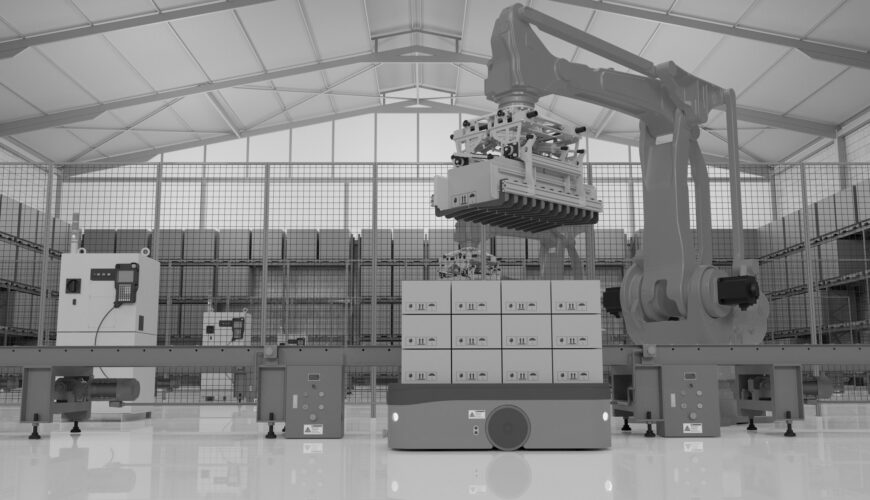The advent of robotic palletizing and depalletizing is changing warehouse operations dramatically and increasing productivity. One of the most physically demanding tasks in a warehouse, palletizing and depalletizing, has been significantly alleviated by the introduction of robotic arms. These tasks, which often involve repetitive lifting and moving heavy loads throughout a shift, have become a challenge to efficiently cover with human employees due to labor shortages. However, with the assistance of robotic arms, the palletizing end of the task has been made much easier and more efficient, providing a sense of relief from the physical strain.
Until recently, depalletizing, especially when it involves boxes of different sizes and shapes, posed a challenge for robotics. However, with the advent of AI-driven vision capabilities, companies can now complete both robotic palletizing and depalletizing tasks with precision and efficiency, effectively removing the need for human intervention. This advancement in technology instills a sense of confidence and reassurance in its capabilities.
AI-driven vision robotic palletizing and depalletizing can now be employed with other technology, such as high-density ASRS or shuttle systems. This combination helps companies successfully set up the proper sequencing for palletizing/depalletizing. You can also pair robotic palletizing and depalletizing with autonomous mobile robots (AMRs) or Automated Guided Vehicles (AGVs), which can bring pallets to/from the robotic arms.
One of the best emerging features of AI-driven vision with robotic palletizing and depalletizing is its ability to learn as it goes. If a case comes into the range of the robot, it begins to learn its characteristics, like weights and dimensions. The AI also helps the robots determine if the boxes are “soft” and malleable, requiring placement on top of others, not on the bottom. One full pass through an unfamiliar set of cases is generally all it takes for the vision-enhanced robotic arm to recognize the boxes and repeat the same handling approach.
This enhanced ability allows for much smoother inbound receiving, and the depalletizing system can work without extra human operators. They, in turn, can spend their time putting load configurations into the system so that the depalletizer can identify products for handling. SKU variability remains higher on the depalletizing side, especially with mixed-case depalletizing. Vision-enhanced depalletizers can now manage these mixed loads with a variety of SKUs, something they struggled to achieve not long ago.
The robots build for the store or end customer awaiting the pallet, ensuring all the specific requirements are met. Vision confirms the configuration, and the warehouse can rest assured the pallets are headed out without errors. The systems are not infallible, however, and to ensure accuracy, you still need to manage your master data on packages and the SKU characteristics. For that reason, you should have—or develop—a good system for maintaining master data. You should also be prepared to add new data from suppliers as it comes in.
While robotic palletizing and depalletizing is a success, the optimal use of warehouse robots requires a collaborative effort with your OEM and supply chain consultant. This partnership is crucial for understanding how to best utilize these tools, and your ROI will be a testament to the value of this collaboration. In today’s market, where labor savings are a significant consideration, this collaboration is more than justified, making you feel valued and integral to the implementation process.


